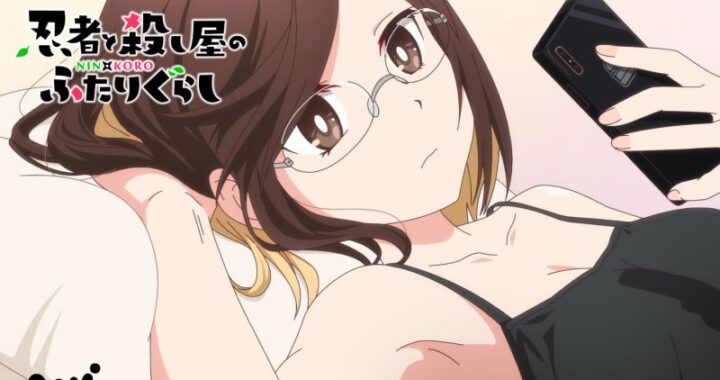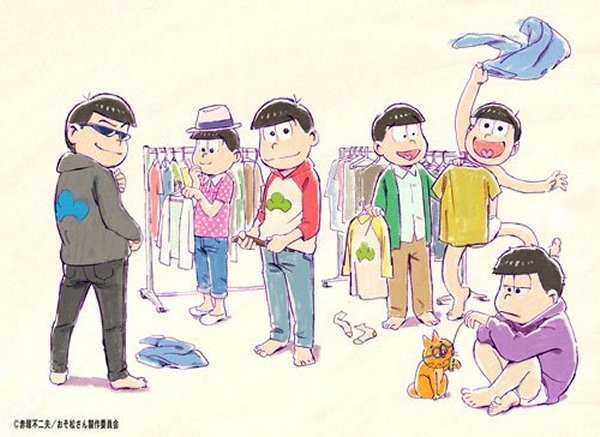I have an artful appreciation for fashion, the sense of creating something both audacious and utilitarian, the ephemeral reality of it just walking away, to be replaced in six months or a year, its creator something between a fine artist and a chef. This, at a remove, of course—as for following the baroque fashion world, or let alone buying the stuff, there is not much appeal. But the world of fashion is, as much as some would want to avoid it, rooted in popular culture, from music and art to sports and politics, its story as big and as intertwined with society as any of those things. So much so that the smaller and more intimate stories of fashion—the young designer looking to make a name, the naive young model looking for a purpose—are forgotten. More than a Ben Stiller comedy could say, at least.
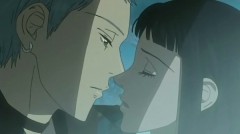 The fashion magazine, Zipper, targets teenage girls in Japan and was the natural home of Ai Yazawa’s Paradise Kiss shoujo manga from 1999-2003, about the fashion collective at an arts school, and the youthful tensions, mysteries, and passions of its resplendent and eccentric characters. Though not appearing in a standard manga magazine, it was popular enough to spawn both a 12-episode anime series, in 2006, and a live-action movie, in 2011, and remains an influential title for a couple generations of readers and creators in and outside of Japan. It was the spin-off of characters from Yazawa’s earlier fashion-oriented title, Neighborhood Story, which did appear in a shoujo manga magazine, Ribbon, and received its own anime adaptation in 1995. Paradise Kiss takes a turn from that previous tale of burgeoning young love between childhood friends, introducing Yukari Hayasaka, a high school girl recruited by four fashion students from Yazawa Arts high school to be a model for their collection, offering instead a story about breaking away and finding purpose.
The fashion magazine, Zipper, targets teenage girls in Japan and was the natural home of Ai Yazawa’s Paradise Kiss shoujo manga from 1999-2003, about the fashion collective at an arts school, and the youthful tensions, mysteries, and passions of its resplendent and eccentric characters. Though not appearing in a standard manga magazine, it was popular enough to spawn both a 12-episode anime series, in 2006, and a live-action movie, in 2011, and remains an influential title for a couple generations of readers and creators in and outside of Japan. It was the spin-off of characters from Yazawa’s earlier fashion-oriented title, Neighborhood Story, which did appear in a shoujo manga magazine, Ribbon, and received its own anime adaptation in 1995. Paradise Kiss takes a turn from that previous tale of burgeoning young love between childhood friends, introducing Yukari Hayasaka, a high school girl recruited by four fashion students from Yazawa Arts high school to be a model for their collection, offering instead a story about breaking away and finding purpose.
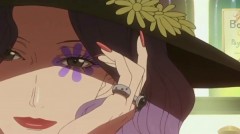 This is naive romance as well but with a more raw and honest bent. In the parlance of shoujo it’s “Does he like me?” by way of, “Do I love me?” Yukari, smart and beautiful, is plucked from a regimented life by misfits into a misfit culture where she will have to rebel from her previous life, defined by her mother, to see how these creative outcasts live a life defined not by what society expects but what you yourself can dream. For the compact anime adaptation, it is all the same a neat moral arc. The girl is seduced by the handsome, hedonistic, and wealthy older boy—Jouji “George” Koizumi, the brilliant designer of the “Paradise Kiss” collective’s clothes—who uses her for a muse and introduces her to pleasure but will not entertain her infatuation. She is confounded by his cohorts—childish but sexually mature Miwako (younger sister of Mikako, the heroine of Neighborhood Story, now the owner of her own fashion label), her punk-rock boyfriend, Arashi, and Isabella, a transgender young woman—but is welcomed by their unsurprising humanity. All to goad her to cast off her old identity, before growing up a little, fitting this new version of herself into her old life and emerging as a responsible, if no longer afraid, young woman, ready for the world.
This is naive romance as well but with a more raw and honest bent. In the parlance of shoujo it’s “Does he like me?” by way of, “Do I love me?” Yukari, smart and beautiful, is plucked from a regimented life by misfits into a misfit culture where she will have to rebel from her previous life, defined by her mother, to see how these creative outcasts live a life defined not by what society expects but what you yourself can dream. For the compact anime adaptation, it is all the same a neat moral arc. The girl is seduced by the handsome, hedonistic, and wealthy older boy—Jouji “George” Koizumi, the brilliant designer of the “Paradise Kiss” collective’s clothes—who uses her for a muse and introduces her to pleasure but will not entertain her infatuation. She is confounded by his cohorts—childish but sexually mature Miwako (younger sister of Mikako, the heroine of Neighborhood Story, now the owner of her own fashion label), her punk-rock boyfriend, Arashi, and Isabella, a transgender young woman—but is welcomed by their unsurprising humanity. All to goad her to cast off her old identity, before growing up a little, fitting this new version of herself into her old life and emerging as a responsible, if no longer afraid, young woman, ready for the world.
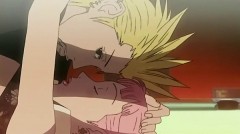 The theme is familiar—the cult TV show from this same era, Freaks and Geeks, was also fueled by it (though, canceled, it ended to notable effect short of such a moral lesson as Yukari’s). While many shoujo stories targeted at young women and girls demonstrate self-confidence and self-reliance, I’m not convinced it goes too far out on the limb, where the dream of such a happy life defined by the fairy-tale partner—if not the brooding prince, then the childhood friend—is still not a major goal. (The anime does leave this more open-ended.) But at least it explores, if not vindicates, alternate paths. And away from mainstream anime for boys, there’s sex here as a matter of course, the passions of art knotted in the libidos of independent-minded adolescents, chasing, seducing, fulfilling, and second-guessing their relationships.
The theme is familiar—the cult TV show from this same era, Freaks and Geeks, was also fueled by it (though, canceled, it ended to notable effect short of such a moral lesson as Yukari’s). While many shoujo stories targeted at young women and girls demonstrate self-confidence and self-reliance, I’m not convinced it goes too far out on the limb, where the dream of such a happy life defined by the fairy-tale partner—if not the brooding prince, then the childhood friend—is still not a major goal. (The anime does leave this more open-ended.) But at least it explores, if not vindicates, alternate paths. And away from mainstream anime for boys, there’s sex here as a matter of course, the passions of art knotted in the libidos of independent-minded adolescents, chasing, seducing, fulfilling, and second-guessing their relationships.
George’s story—that designer looking to make a name—is not lost in all of this; it’s much of the plot. He needs Yukari to model what is more or less his senior project, and her influence is important in maturing the vision of what that should be. He is from start to finish, no matter the dark underside of his backstory, such a mature and confident-acting person that you forget he’s within a year or two of all these other characters, and that sense of rooting for his success is tempered by a personality, and a life, that seems already well rewarded.
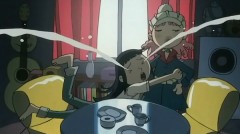 So, then, there is the style of the show to make the case. A MADHOUSE joint, it was in large part the vision of minor iconoclast director and writer, Osamu Kobayashi. 2005’s Paradise Kiss seems a second part to Kobayashi’s indulgence in contemporary pop culture, following 2004’s BECK: Mongolian Chop Squad. Both are drenched in his alternatively sharp, patterned lines and plastic, sometimes surreal imagery. His art director on both, Shinichi Uehara, was most likely key in creating worlds of punk and paisley, hard rock and haute couture. But the power of Paradise Kiss begins, as with BECK, with its opening, a moody, techno-pop music video for Tomoko Kawase’s Tommy february6 (a cute/bad-girl persona shared, almost by synergy, in some of ParaKiss’s characters) and her song, “Lonely in Gorgeous”. And it ends, more playful, with signature Kobayashi caricatures of the main cast bouncing to Franz Ferdinand’s anthem of self-indulgence, “Do You Want To”. Between these bookends, 12 episodes in a row, are slower-moving music videos of psycho-sexual drama and angst in a world of cool clothes, nice cars, hot girls, and dangerous boys. Like BECK, at least by MADHOUSE’s lens, there is that air of self-indulgence to all of this, in fact. But Yukari in the middle of all this, skirting the edge herself, remains grounded enough a heroine that it’s just no fun to get down on her and not enjoy this flamboyant but hidden world through her guileless eyes.
So, then, there is the style of the show to make the case. A MADHOUSE joint, it was in large part the vision of minor iconoclast director and writer, Osamu Kobayashi. 2005’s Paradise Kiss seems a second part to Kobayashi’s indulgence in contemporary pop culture, following 2004’s BECK: Mongolian Chop Squad. Both are drenched in his alternatively sharp, patterned lines and plastic, sometimes surreal imagery. His art director on both, Shinichi Uehara, was most likely key in creating worlds of punk and paisley, hard rock and haute couture. But the power of Paradise Kiss begins, as with BECK, with its opening, a moody, techno-pop music video for Tomoko Kawase’s Tommy february6 (a cute/bad-girl persona shared, almost by synergy, in some of ParaKiss’s characters) and her song, “Lonely in Gorgeous”. And it ends, more playful, with signature Kobayashi caricatures of the main cast bouncing to Franz Ferdinand’s anthem of self-indulgence, “Do You Want To”. Between these bookends, 12 episodes in a row, are slower-moving music videos of psycho-sexual drama and angst in a world of cool clothes, nice cars, hot girls, and dangerous boys. Like BECK, at least by MADHOUSE’s lens, there is that air of self-indulgence to all of this, in fact. But Yukari in the middle of all this, skirting the edge herself, remains grounded enough a heroine that it’s just no fun to get down on her and not enjoy this flamboyant but hidden world through her guileless eyes.
Funimation had this, after a short-lived rescue from Geneon, who released it in North America originally, beginning in 2006. This would mark, perhaps, the beginning of the end of Geneon, so generous for years, dubbing such niche shows. But they got a great one, from BangZoom!—or, rather, ParaKiss superfan Stephanie Sheh, who adapted and, in her debut, directed a mature but loving vision of the story. It may have been more than initial sales deserved, but the show’s original editions are long sold out and rare. Ai Yazawa’s manga had been published in English by TOKYOPOP, but now resides in large new editions from Vertical.
This article was originally posted in 2015 as part of our inaugural Ten Years Later project and has been updated to reflect that it’s been *heavy sigh* twenty years now by the editor.





